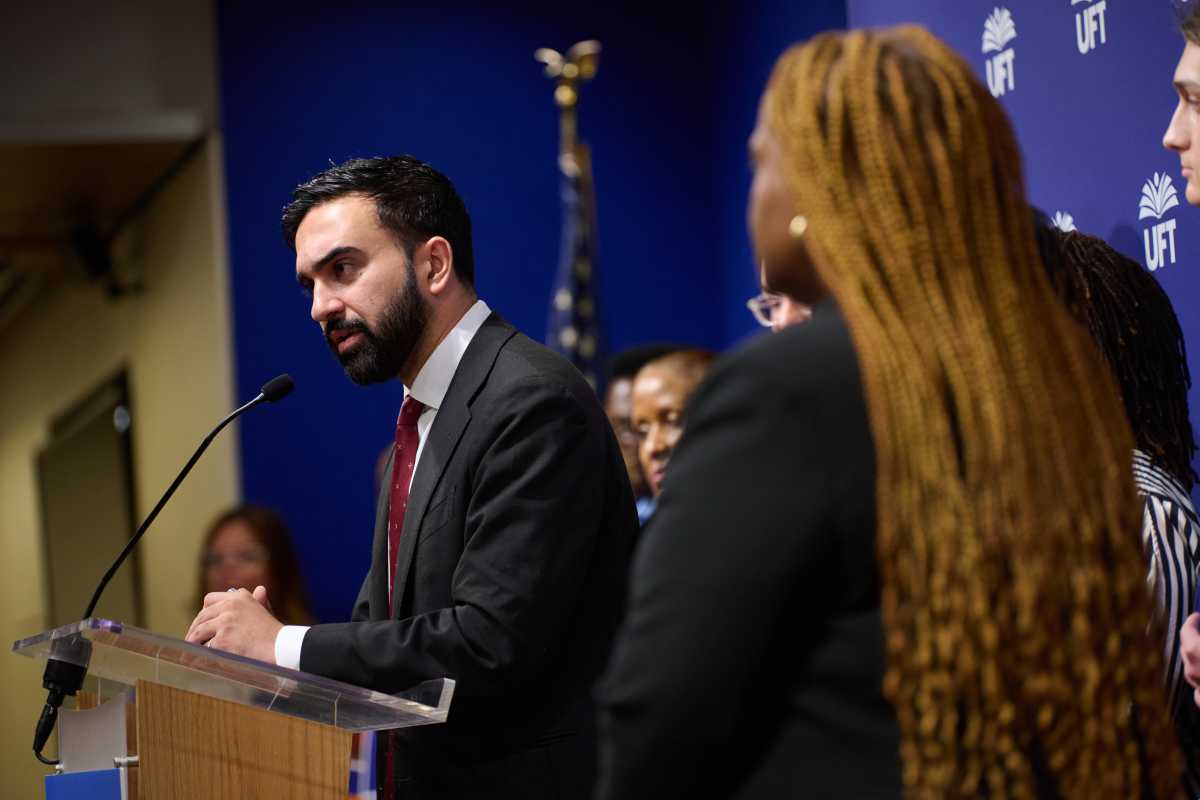A representative for the NYC Department of Education’s chief financial officer discussed fair student funding at the Community District Education Council 26 virtual meeting on Jan. 12. The discussion stemmed from concerns that the northeast Queens district will lose $6.5-17.5 million in funding based on the final report released two months ago by the fair student funding working group.
According to the analysis, District 26 K-8 schools face the largest budget cuts out of all 32 districts within the city. As a result, many within the district are very concerned about the potential consequences this may have on the students and schools. CEC 26 President Al Suhu argued that while members of the working group may be looking at a high-level picture, he believes they did not consider the effects on individual schools.
“These policy changes may not be achieving the policy changes that the working group is trying to get to,” Suhu said. “And that calls into question the validity of these model changes.”
The DOE CFO representative went over four different proposals related to fair student funding. Prior to that, he pointed out that under the current model, each school receives $225,000, regardless of size. The models including increasing the base weight, creating a students in temporary housing weight, increasing poverty weight and creating concentration weight. While each model results in funds being transferred from generally low-poverty schools to high-poverty schools, they each have different general systemwide impacts.
If there isn’t any funding added to the formula, increasing the base weight would bring a net transfer of funds from larger schools to smaller schools. This would result in the ten largest schools in the city losing an average of $712 per student or $2.7 million per school.
Under the students in temporary housing weight, approximately 67,000 students would fall under this category, equating to about 9% of K-12 students in the city.
Increasing the poverty weight would classify around 550,000 students as being in poverty. This would equate to 70% of the K-12 student body. Since this weight leads to a fairly broad distribution of funding, many schools around the average level of poverty could essentially lose funding in the form of grade weight and get it back in the form of poverty weight. The large number of students that would be considered in poverty would mean even a small new weight would have a heavy cost.
The concentration weight creates a new index that is based upon need as calculated by the percentage of students in temporary housing, students in poverty, English language learners and students with disabilities. The neediest one-third schools would then be identified to receive additional funding. Under this weight, schools with the highest number of students with multiple needs would receive the most funding.
According to the DOE CFO, without new funding, the impact overall on low-poverty schools and large schools is negative. This is especially true for specialized high schools, as many fall into both categories. There are currently only 13 schools in New York City receiving specialized academic weight.
There were four types of funding models used to measure the degree of the overall transfer of funds from low-poverty schools to high-poverty schools. These included low model new funding, low model net zero, high model new funding and high model net zero.
Low model new funding removes $22 million in funds from the 13 specialized schools and adds $398 million to 1,512 schools. This would result in a net change of $275 million. However, it is the least progressive of the models, as it results in just $1,205 more per student on average per percentage point increase of poverty rate at a school.
The low model net zero removes $113 million in funding from the fair student funding per capita formula from 530 schools. It is then reallocated to 995 schools. This model is 127% more progressive than the previous one, with $2,735 more per student per percentage point increase in poverty.
The high model new funding removes $17 million in funds from the 13 schools and adds $1 billion in funding to 1,512 schools. This model is 6% more progressive than the low model new funding, with $1,276 more per student per percentage point increase in poverty.
The high model net zero removes $269 million from the fair student funding per capita formula from 526 schools. It is allocated to 999 schools. This model is 142% more progressive than the low model new funding, with $2,920 more per student per percentage point increase in poverty.
It was emphasized that these models are only recommendations from the fair student funding working group. NYC Schools Chancellor David Banks has yet to decide which of the models to implement and may end up not choosing any of them.
Suhu questioned the current model’s validity because it was created in 2007 and the student population has vastly changed since then. There’s been an enrollment decrease of around 15% over that period of time. With the domain no longer the same, he felt the division of finance should consider a newer model.
“You can’t continue to use a model in which the independent variables are no longer the same,” Suhu said. “The model is not designed for the enrollment of only 900,000 students. On top of that, demographics have changed. That’s something I think needs to be examined.”
The model’s formula has been updated multiple times over the years to reflect changes in programs, policies and other factors. This was to ensure schools had the funding they needed to meet the necessary mandates.
Suhu said he felt the working group may not have consisted of members with the right skills for the issues at hand. He believes that people with the right skills in data analysis meeting to broach the topic over the span of 6-12 months try to come up with a better solution.





































